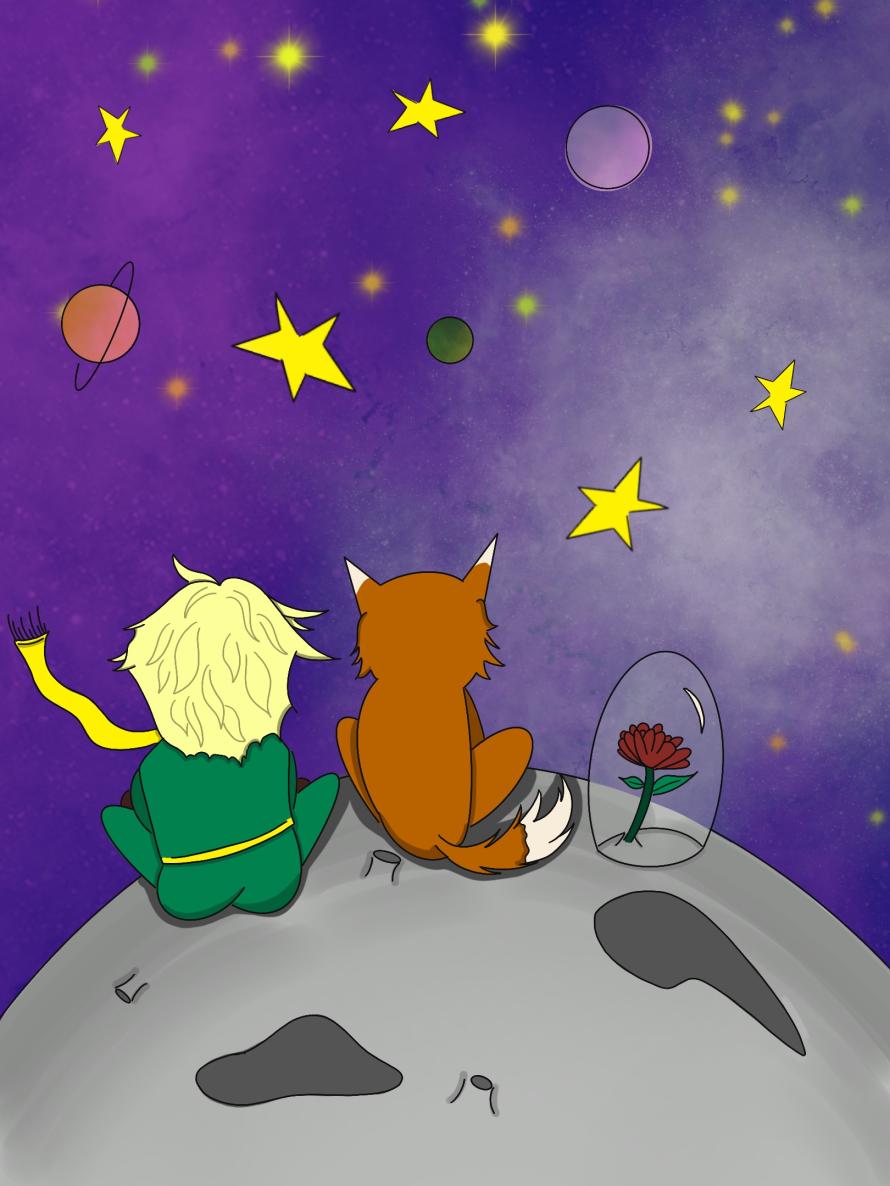The Little Prince: A timeless classic
The last time I read The Little Prince, I was nine years old. A couple days ago, I found a copy of it covered in dust at the back of my bookshelf and started reading it again. Immediately, I found myself drawn into the book’s narrative world as I read with a newfound understanding of the literature.
The Little Prince is a beloved novella written by French writer Antoine de Saint- Exupéry and originally published in 1943. Saint-Exupéry made some astonishing works in the art of storytelling. His writing is poetic yet simple. Despite often being considered a children’s book, The Little Prince has charmed readers of all ages for generations with its deep philosophy on life.
As our protagonist, the little prince, visits different planets, he encounters an array of characters who each represent an adult vice or shortcoming: the self-absorbed king, the greedy man, and the narrow-minded lamplighter. The little prince’s trip serves as a metaphor for self-discovery, and it emphasizes the importance of understanding connection in a world marked by materialism.
The Little Prince has a non-linear and introspective style of storytelling. The story is told from the perspective of the aviator, who recalls his encounter with the little prince after his plane crashes in a desert that the little prince is traversing. Things happen in the present tense. Flashbacks and philosophical reflections within the narrative enrich the book’s themes and also emphasize the contrast between the absurdity of adult world and the little prince’s innocence.
One of the unique features of The Little Prince is the inclusion of the author’s own illustrations. These drawings complement the text and add a layer of enchantment to the story. They often reveal notions and subtleties that words alone cannot express, making the experience of reading the book more immersive.
As I was reading the story, I couldn’t help but notice the little prince’s childlike innocence. It serves as a mirror, reflecting the complexities of adult life. During his journeys from one asteroid to another, he interacts with a cast of odd characters, each reflecting one side of human nature. They offer us valuable lessons and allow us to reflect on our behaviours and choices.
Reading The Little Prince as a child at the age of nine was like embarking on a whimsical adventure through a world of illustrations and tales. Back then, I saw it as a heartwarming story of friendship and imagination.
Today, as an adult revisiting the beloved classic, I find myself marveling at the layers of wisdom that my younger self never saw or understood. It reminds me of how much life has transformed since that innocent age—the complexities, the responsibilities, and the experiences that have shaped me. I’ve come to realize that in the midst of life’s hectic pace, I sometimes forget the wisdom of slowing down and seeing the world through a child’s eyes. Children, as I observe, possess an innate ability to simplify complex ideas and see the beauty in life’s simple details.
The Little Prince encourages us to look beyond the surface, to see with our hearts, and to appreciate the vital things in life. I wholeheartedly recommend it to anyone seeking a literary journey that is as enchanting as it is enlightening.

